Lymphedema test. Lymphedema: Diagnosis, Treatment, and Prevention Strategies
How is lymphedema diagnosed. What are the treatment options for lymphedema. How can lymphedema be prevented. What are the key diagnostic tests for lymphedema. What lifestyle changes can help manage lymphedema. When should surgical intervention be considered for lymphedema. What are the recommended self-care practices for lymphedema patients.
Understanding Lymphedema: Causes and Risk Factors
Lymphedema is a condition characterized by the abnormal buildup of protein-rich fluid in body tissues, typically affecting the limbs. It occurs due to a malfunction in the lymphatic system, which is responsible for fluid circulation and immune function. There are two main types of lymphedema:
- Primary lymphedema: A rare, inherited condition present at birth or developing later in life
- Secondary lymphedema: More common, resulting from damage to the lymphatic system, often due to cancer treatments, surgery, or infection
Understanding the underlying causes and risk factors is crucial for early detection and management of lymphedema. Individuals who have undergone lymph node removal or radiation therapy are at higher risk of developing secondary lymphedema.
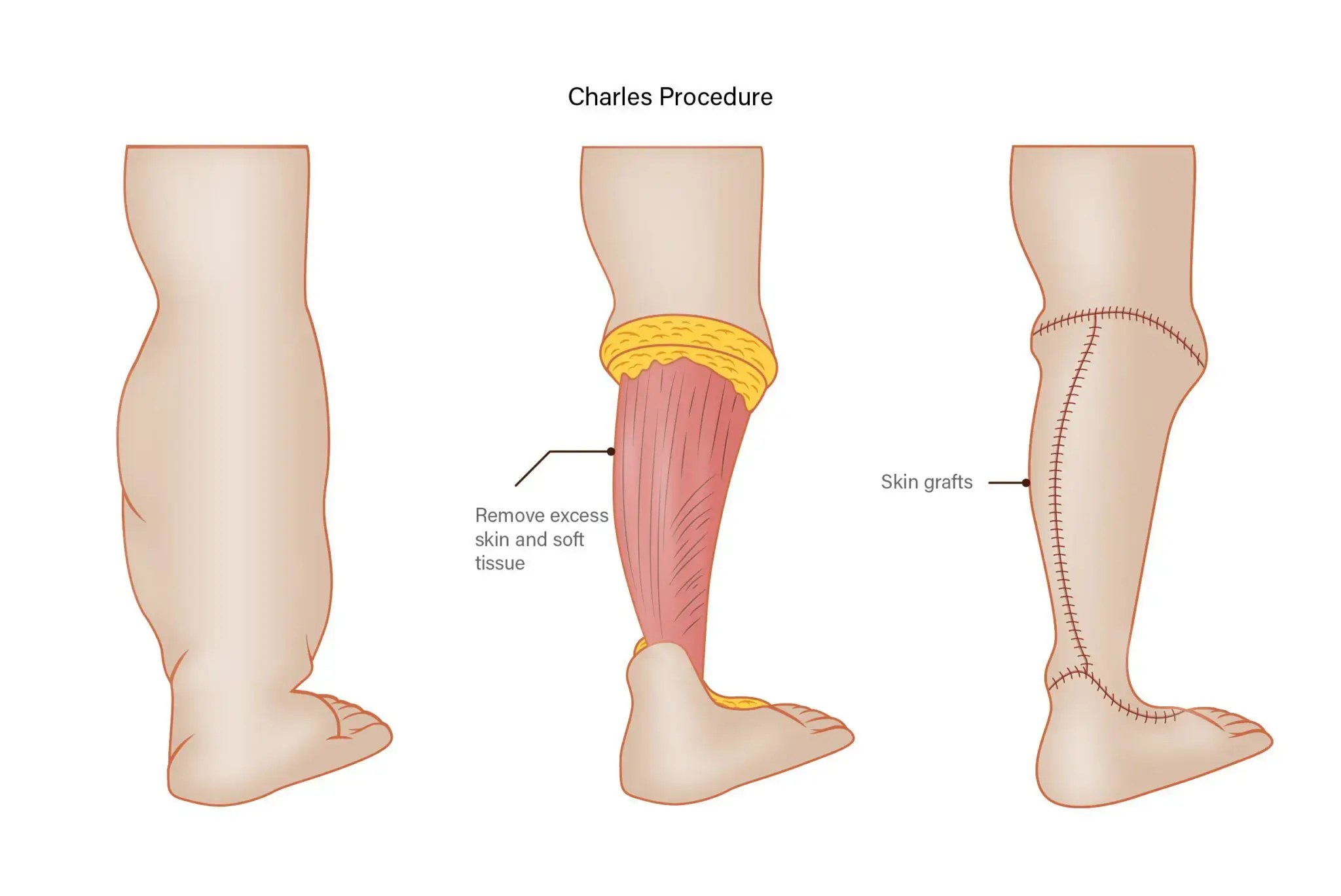
Diagnostic Approaches for Lymphedema
Early diagnosis of lymphedema is essential for effective treatment and prevention of complications. Healthcare providers employ various diagnostic methods to assess and monitor the condition:
Clinical Examination and History
The initial step in diagnosing lymphedema involves a thorough clinical examination and medical history review. During this process, the healthcare provider will:
- Inquire about symptoms and medical history
- Examine the affected limb for signs of swelling
- Measure the circumference of the limb to detect enlargement
Specialized Diagnostic Tests
While not always necessary, specialized tests may be used to confirm the diagnosis or assess the severity of lymphedema:
- Limb Volume Measurements:
- Tape measure method: Calculating limb volume based on circumference measurements
- Water displacement: Measuring the volume of water displaced by the affected limb
- Perometry: Using infrared light to measure limb outline and calculate volume
- Bioimpedance Testing: Assessing tissue fluid levels through small electrical currents
- Imaging Studies:
- Lymphoscintigraphy: Tracking radioactive dye movement through the lymphatic system
- MRI (Magnetic Resonance Imaging): Producing detailed images of soft tissues
- Ultrasound: Visualizing tissue structures using high-frequency sound waves
- CT (Computed Tomography) scan: Creating cross-sectional images of lymph nodes and surrounding tissues
These diagnostic approaches help healthcare providers accurately diagnose lymphedema and develop appropriate treatment plans.
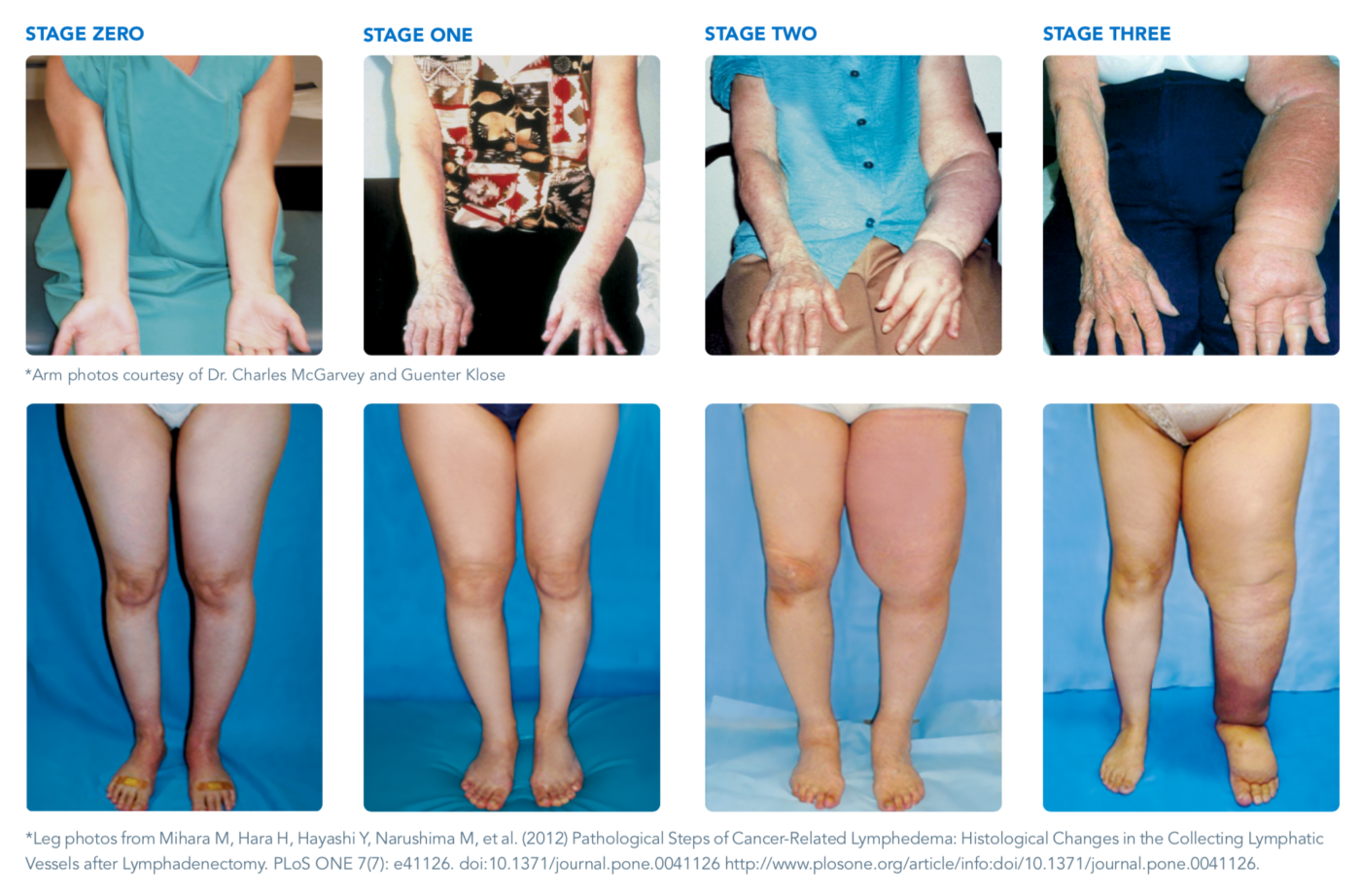
Comprehensive Treatment Strategies for Lymphedema
Managing lymphedema requires a multifaceted approach, combining various therapeutic interventions to reduce swelling, alleviate symptoms, and improve quality of life. The treatment plan is typically tailored to the individual’s specific needs and the severity of their condition.
Conservative Management Techniques
For early-stage lymphedema, conservative management is often the first line of treatment:
- Complete Decongestive Therapy (CDT): A combination of manual lymph drainage, compression therapy, exercise, and skin care
- Manual Lymph Drainage (MLD): Gentle massage techniques to stimulate lymph flow
- Compression Therapy: Using bandages, garments, or pneumatic compression devices to reduce swelling
- Exercise: Tailored physical activities to improve lymph circulation and muscle strength
- Skin Care: Meticulous hygiene practices to prevent infections
Pharmacological Interventions
Medications may be prescribed to manage symptoms and complications associated with lymphedema:

- Diuretics: To help reduce fluid retention, used cautiously and under medical supervision
- Antibiotics: For treating or preventing infections in the affected area
- Anti-inflammatory drugs: To relieve pain and inflammation
Surgical Options for Advanced Lymphedema
In cases where conservative treatments prove ineffective, surgical interventions may be considered:
- Lymph Node Transfer: Transplanting healthy lymph nodes to improve lymphatic drainage
- Lymphovenous Anastomosis: Creating connections between lymphatic vessels and veins to bypass blockages
- Debulking Procedures: Removing excess tissue in severe cases of lymphedema
The choice of surgical approach depends on the individual’s specific condition and is typically reserved for advanced or refractory cases of lymphedema.
Lifestyle Modifications and Self-Care Practices
Effective management of lymphedema extends beyond medical treatments, encompassing various lifestyle modifications and self-care practices. These strategies play a crucial role in preventing complications and maintaining overall well-being:

Maintaining Proper Hygiene
Meticulous skin care is essential to prevent infections in the affected limb:
- Clean the skin daily with mild soap and water
- Apply moisturizer to keep the skin supple and prevent dryness
- Trim nails carefully and avoid cutting cuticles
- Promptly clean and dress any cuts or abrasions
Staying Physically Active
Regular exercise can improve lymph flow and overall health:
- Engage in gentle exercises recommended by a healthcare provider or physical therapist
- Practice low-impact activities such as swimming, walking, or yoga
- Avoid overly strenuous or repetitive movements that may exacerbate swelling
Dietary Considerations
A balanced diet can support lymphedema management:
- Maintain a healthy weight to reduce pressure on the lymphatic system
- Limit sodium intake to prevent fluid retention
- Stay hydrated by drinking plenty of water
- Include anti-inflammatory foods in your diet, such as fruits, vegetables, and omega-3 fatty acids
Protective Measures
Taking precautions to avoid injury and excessive pressure on the affected limb is crucial:

- Wear protective gloves during household chores or gardening
- Use an electric shaver to minimize the risk of cuts
- Avoid tight clothing or jewelry that may constrict the affected area
- Elevate the affected limb when possible to promote drainage
By incorporating these lifestyle modifications and self-care practices, individuals with lymphedema can better manage their condition and improve their quality of life.
Prevention Strategies for At-Risk Individuals
While not all cases of lymphedema can be prevented, individuals at risk can take proactive measures to reduce their likelihood of developing the condition or minimize its severity. This is particularly important for those who have undergone cancer treatments involving lymph node removal or radiation therapy.
Risk Awareness and Education
Understanding the risk factors and early signs of lymphedema is crucial:
- Stay informed about your individual risk based on medical history
- Learn to recognize early symptoms of lymphedema, such as heaviness, aching, or swelling in the affected limb
- Attend follow-up appointments and discuss any concerns with healthcare providers
Limb Protection and Care
Taking steps to protect the at-risk limb can help prevent lymphedema:

- Avoid blood draws, injections, or blood pressure measurements on the affected arm (for those with breast cancer-related lymphedema risk)
- Use sunscreen and insect repellent to prevent sunburn and insect bites
- Wear compression garments during air travel or other activities that may increase swelling
Gradual Return to Activity
After surgery or radiation therapy, a cautious approach to resuming activities is recommended:
- Follow healthcare provider guidelines for post-treatment exercise and activity levels
- Gradually increase the intensity and duration of activities
- Be mindful of any changes in sensation or swelling during exercise
By implementing these prevention strategies, at-risk individuals can take an active role in reducing their chances of developing lymphedema or managing its onset effectively.
Monitoring and Long-Term Management of Lymphedema
Effective long-term management of lymphedema requires ongoing monitoring and adjustment of treatment strategies. This proactive approach helps prevent complications and maintain the best possible quality of life for individuals with the condition.
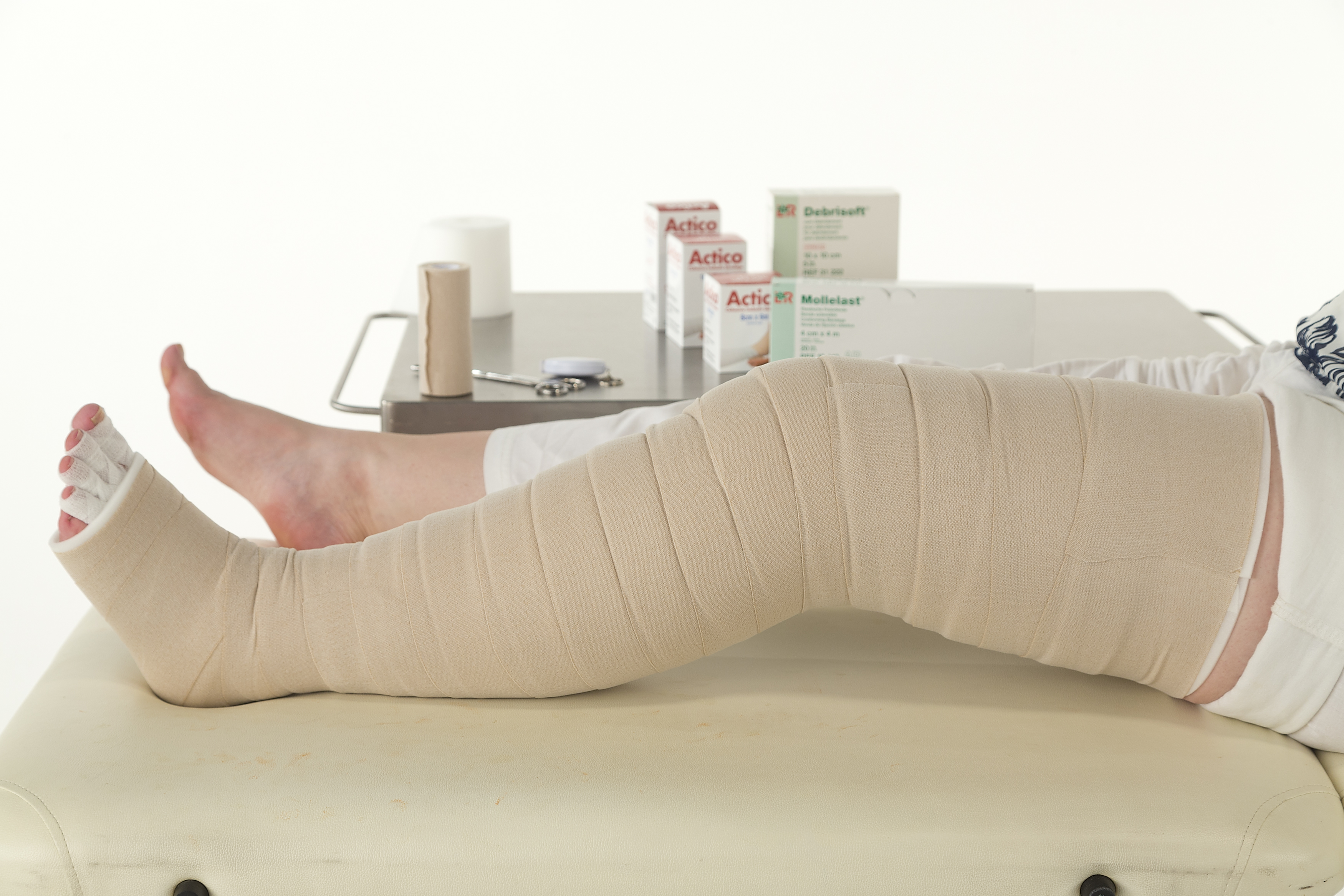
Regular Follow-Up Appointments
Scheduled check-ups with healthcare providers are essential for monitoring the progression of lymphedema:
- Attend regular appointments with lymphedema specialists or primary care physicians
- Undergo periodic measurements of the affected limb to track changes in size and volume
- Discuss any new symptoms or concerns with healthcare providers
Adapting Treatment Plans
As the condition evolves, treatment strategies may need to be adjusted:
- Reassess the effectiveness of current treatments and make necessary modifications
- Explore new treatment options or technologies as they become available
- Update compression garments or devices as needed to ensure optimal fit and function
Mental Health Support
Living with a chronic condition like lymphedema can have psychological impacts:
- Seek support from mental health professionals if needed
- Join support groups or online communities to connect with others who have lymphedema
- Practice stress-reduction techniques such as meditation or mindfulness
By maintaining vigilant monitoring and adapting management strategies over time, individuals with lymphedema can effectively control their symptoms and maintain a high quality of life.

Emerging Treatments and Future Directions in Lymphedema Care
The field of lymphedema treatment is continuously evolving, with ongoing research and development of new therapeutic approaches. Understanding these emerging treatments and future directions can provide hope and potential new options for individuals living with lymphedema.
Advanced Surgical Techniques
Innovative surgical procedures are being refined to offer more targeted and effective treatments:
- Super-microsurgery: Utilizing high-powered microscopes for precise lymphatic vessel reconstruction
- Vascularized lymph node transfer (VLNT): Transplanting healthy lymph nodes to improve lymphatic drainage
- Lymphaticovenular anastomosis (LVA): Creating new connections between lymphatic vessels and veins
Pharmacological Advancements
Research into new medications and drug therapies shows promise:
- Anti-inflammatory agents: Targeting the inflammatory processes involved in lymphedema progression
- Growth factors: Stimulating the growth of new lymphatic vessels
- Gene therapy: Exploring genetic approaches to enhance lymphatic function
Technological Innovations
Cutting-edge technologies are being developed to improve diagnosis and treatment:
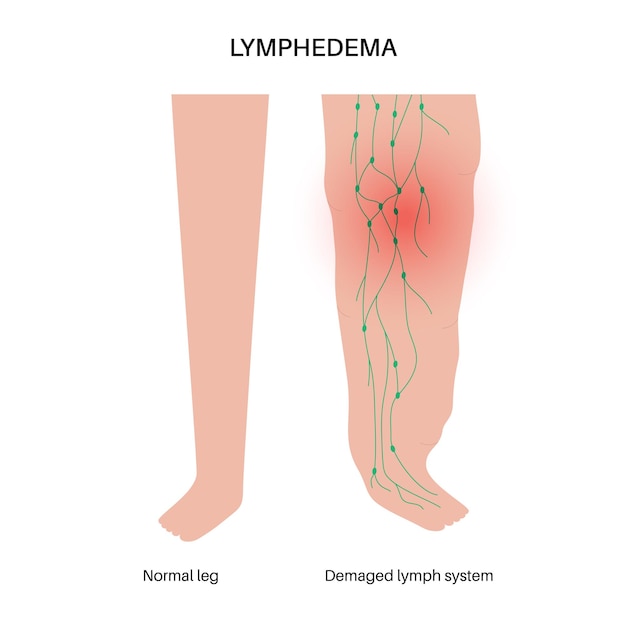
- Advanced imaging techniques: Enhancing the visualization of lymphatic structures
- Wearable devices: Monitoring lymphedema progression in real-time
- 3D-printed compression garments: Providing customized and more effective compression therapy
Regenerative Medicine Approaches
The potential of stem cell therapy and tissue engineering is being explored:
- Stem cell treatments: Using stem cells to regenerate damaged lymphatic tissue
- Bioengineered lymphatic vessels: Creating artificial lymphatic structures to improve drainage
While many of these approaches are still in the research or early clinical trial stages, they represent exciting possibilities for the future of lymphedema care. As these treatments continue to develop, individuals with lymphedema may have access to more effective and personalized treatment options in the coming years.
Lymphoedema – Diagnosis – NHS
See a GP if you have symptoms of lymphoedema. If you’re being treated for cancer and are at risk of developing lymphoedema, you’ll be monitored for the condition afterwards.
In many cases, it’s possible to diagnose lymphoedema by:
- asking about your symptoms and medical history
- examining the affected limb and measuring the distance around it to see if it’s enlarged
The GP may refer you to a specialist lymphoedema treatment centre for further assessment.
Early diagnosis and treatment can help prevent the condition from getting worse.
In most cases, further tests are not necessary, but they may occasionally be used to assess and monitor your condition.
Measuring limb volume
In some cases, tests to calculate the volume of an affected limb may be carried out.
These may include:
- using a tape measure – to measure the circumference of the limb at certain intervals to calculate its volume
- water displacement – where the affected limb is placed in a tank of water and the amount of water that’s displaced is measured to calculate the volume of the limb
- perometry – where infrared light is used to measure the outline of an affected limb and calculate its volume
Bioimpedance testing
During a bioimpedance test, small metallic discs called electrodes are placed on different parts of your body.
The electrodes release a small, painless electric charge that’s measured using a handheld device. Changes in the strength of the current can indicate the presence of fluid in your tissue.
Imaging tests
Imaging tests may also be used if there’s uncertainty around the diagnosis or to rule out other causes of swelling.
These include:
- a lymphoscintigram – where you’re injected with a radioactive dye that can be tracked by a scanner; this shows how the dye moves through your lymphatic system and can check for any blockages
- a MRI scan – a strong magnetic field and radio waves are used to produce detailed images of the inside of your body
- an ultrasound scan – high-frequency sound waves are used to create an image of the inside of your body
- a CT scan – X-rays and a computer create detailed images of the lymph nodes
These scans can be used to create a clearer picture of the affected tissue.
Page last reviewed: 29 March 2023
Next review due: 29 March 2026
Treating Lymphedema | Johns Hopkins Medicine
What You Need to Know
- The lymphatic system is made up of many vessels that carry fluid
throughout the body.
- Lymphedema is an abnormal buildup of protein-rich fluid in any part of
the body as a result of malfunction in the lymphatic system. You can be born with it (primary lymphedema) or develop it as a result of damage to the lymphatic system, such as after surgery or infection (secondary lymphedema). - Early-stage lymphedema can be treated with nonsurgical interventions,
including medication, a healthy diet and manual compression. - For advanced-stage lymphedema, surgical intervention may be
recommended.
Lymphedema Prevention
People who have had surgery to remove lymph nodes in the armpit should be aware of those activities that put too much pressure on the affected arm. Protective measures to avoid injury and infection include:
Maintaining Proper Hygiene
Clean the skin of the affected arm daily and apply lotion. When drying the arm, be gentle but thorough.

Take proper care of the fingernails and avoid cutting cuticles.
Clean all cuts with soap and water, and then apply antibacterial ointment and a sterile dressing.
Staying Fit
Do exercises regularly to improve drainage, but first consult with your doctor or physical therapist.
Eat a well-balanced, low-sodium diet.
Keep the arm elevated when possible.
Taking Precaution with Everyday Activities
Protect your fingers from needle pricks and sharp objects. Use a thimble when sewing.
Avoid vigorous, repetitive movements against resistance, such as scrubbing, pulling or pushing, with the affected arm.
Avoid sunburns and other burns to the affected arm.
Use an electric shaver when shaving underarms.
Wearing the Right Attire
Wear gloves when gardening and when using strong household detergents.

Do not wear nightgowns or clothing with elastic cuffs.
Carry your handbag or heavy packages in the unaffected arm.
Speaking Up at Your Doctor’s Office
Make sure that all injections are given and blood tests are drawn in the unaffected arm.
If at all possible, have all blood pressure tests done on the unaffected arm.
Avoid extreme hot or cold temperatures on the affected arm, such as heating pads or ice packs.
Notify your doctor immediately of any signs of infection, such as redness, pain, heat, increased swelling or fever.
Talk with your doctor about what you can do to try to prevent lymphedema from happening to you. If lymphedema does develop, let your doctor know right away. There are things you can do to try to keep it from getting worse.
Lymphedema Causes
Lymphedema occurs as a result of a blockage in the lymphatic system.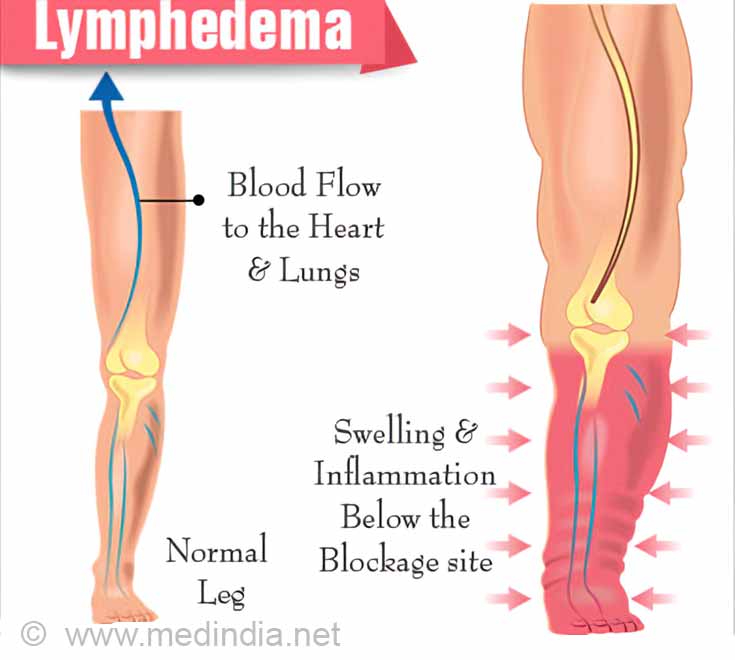 This is most often caused by a traumatic event, such as sports injuries or deep cuts and bruises, as an aftereffect of surgery or cancer treatment. More rarely, lymphedema can occur as birth defect or symptom of infection.
This is most often caused by a traumatic event, such as sports injuries or deep cuts and bruises, as an aftereffect of surgery or cancer treatment. More rarely, lymphedema can occur as birth defect or symptom of infection.
Lymphedema Diagnosis
There are no specific diagnostic tests for lymphedema. The doctor will complete a medical history and physical examination. The medical history may include questions regarding the following:
Past surgeries
Problems following the surgeries
Onset of symptoms (When did the swelling appear?)
History of edema (severe swelling)
Current medications
Other medical conditions, such as high blood pressure, heart disease or diabetes
Stages
Upon diagnosis, your doctor will identify which stage best characterizes your lymphedema and diagnose treatment accordingly. Depending on how the swelling has progressed, your doctor will identify the following stages:
Depending on how the swelling has progressed, your doctor will identify the following stages:
Stage 1: Abnormal flow in the lymphatic system. No signs or symptoms
Stage 2: Accumulation of fluid with swelling. Swelling resolves with elevation. Pressing on the area may leave a dent
Stage 3: Permanent swelling that does not resolve with elevation. Pressing on the area no longer leaves a dent. Changes in the skin with scarring and thickening
Stage 4: Elephantiasis (large deformed limb), skin thickening with “wart-like” growth and extensive scarring
Lymphedema: What Are Your Surgical Options?
There are several treatment options available for lymphedema. Find out what stage you’re in to see medical and surgical options.
Read more
Lymphedema Treatment
Decongestive Therapy for Lymphedema
Treatment for lymphedema depends on the severity and extent of the condition. Prevention and controlling lymphedema play an important role with this condition since there is no cure.
Decongestive treatment is commonly recommended for the first two stages of lymphedema. Treatment options may include:
Exercise. Exercise helps to restore flexibility and strength, and it improves drainage. Specific exercises will be recommended by your doctor and/or physical therapist.
Bandage. Wearing a customized compression sleeve or elastic bandage may help to prevent an accumulation of fluid.
Arm pump. Applying an arm pump often helps to increase the fluid flow in the lymphatic vessels and keeps fluid from collecting in the arm.
Diet.
 Eating a well-balanced diet and controlling body weight is an important part of treatment.
Eating a well-balanced diet and controlling body weight is an important part of treatment.Keep the arm raised. Keeping the arm raised above the level of the heart, whenever possible, allows gravity to help drain the accumulated fluid.
Infection Prevention. It is important to follow preventive measures, such as good skin care, to protect the affected arm from infection and skin breakdown.
Surgical Treatment of Lymphedema
Once lymphedema has progressed to stages 3 or 4, surgical intervention may be recommended. Surgical options include both physiological and excisional procedures. Both procedures aim to restore lymphatic flow. However, physiological procedures involve rewiring the lymphatic system within the limb, while excisional procedures focus on removing diseased tissue.
Physiological Procedures (may be recommended for stages 3 and 4)
Vascularized lymph node transfer.
 The surgeon transfers healthy lymph nodes to the affected area and rewires the lymphatic system to reduce swelling.
The surgeon transfers healthy lymph nodes to the affected area and rewires the lymphatic system to reduce swelling.Lymphaticovenous anastomosis (also referred to as lymphovenous bypass). The surgeon rewires the lymphatic system by connecting lymphatic channels directly to tiny veins nearby. This is an outpatient procedure with very small and minimal incisions and very little blood loss.
Excisional Procedures (may be recommended for stages 3, 4 or 5)
Liposuction. The affected tissue can be removed.
Charles procedure. The surgeon will remove affected tissue and use a part of it as skin grafts to repair the area. This is a more invasive procedure, typically recommended for stages 4 and 5.
Lymphedema, FLT4 gene m. (Milroy’s disease)
Description
Method of determination
Sequencing.
The conclusion of a geneticist is issued!
Test material
Whole blood (with EDTA)
Investigation of mutations in the FLT4 gene.
Inheritance type.
Autosomal dominant with incomplete penetrance. In heterozygous carriers of the mutant gene, the penetrance is 80%, in homozygous – 99%.
Genes responsible for the development of the disease.
VEGFR3 (FLT4 – vascular endothelial growth factor receptor 3), – vascular endothelial growth factor receptor gene. The gene is located on chromosome 5 in the 5q34-q35 region. Consists of 31 exons. 14 mutations have been described in exons 18, 23-25 of the gene. However, there are families for which linkage to the 5q34-q35 region is excluded, which indicates the possible genetic heterogeneity of this disease.
Definition of disease.
Disease of the lymphatic system characterized by the formation of tumors in the extremities.
Pathogenesis and clinical picture.
In the presence of a mutation in the VEGFR3 gene, there is a violation of cardiovascular development in embryogenesis. In adults, this gene is expressed in lymphatic endothelial cells. Tumors of the extremities arise due to dysfunction of the lymphatic vessels. They can be located on one or all limbs, differ in size and position, and can also become malignant. Patients already at birth have swelling of the legs, and the severity of edema can vary from a slight swelling in the ankles to a pronounced increase in the volume of the feet, legs, and thighs. In this case, the skin in the area of edema may be normal or thinned. When pressed, a hole remains. The most severe lesions are observed in the lower extremities from birth. The lymphangiogram shows hypoplasia or aplasia of the lymphatic vessels. Also characterized by short, growth, hypogonadism, mental retardation.
Frequency of occurrence:
1:10,000.
A list of mutations under investigation is available upon request.
Preparation
Special preparation for the study is not required.
Required to fill out:
- genetic testing questionnaire *;
- referral form;
- informed consent.
*Filling out the “questionnaire for molecular genetic testing” is necessary so that the geneticist, based on the results obtained, firstly, would be able to give the patient the most complete conclusion and, secondly, formulate specific individual recommendations for him .
INVITRO guarantees the confidentiality and non-disclosure of information provided by the patient in accordance with the legislation of the Russian Federation.
Indications for prescription
Lymphedema from birth or from early childhood with the exclusion of other causes.
Who should be examined if a mutation is detected:
If a child is diagnosed, both parents, brothers and sisters.
Interpretation of results
Interpretation of test results contains information for the attending physician and is not a diagnosis. The information in this section should not be used for self-diagnosis or self-treatment. An accurate diagnosis is made by the doctor, using both the results of this examination and the necessary information from other sources: history, results of other examinations, etc.
Differential
Meige syndrome, autosomal dominant lymphedema with distichiasis, Proteus syndrome, hemihypertrophy.
Test result:
- No mutation detected
- Mutation detected in the heterozygous state
- Mutation detected in the homozygous state
- The mutation was found in the compound-heterozygous state.
Documents to be completed
Genetic study questionnaire. pdf *
pdf *
Hereditary monogenic diseases and conditions.pdf
*Filling out the “questionnaire for molecular genetic testing” is necessary so that the geneticist, based on the results obtained, firstly, would be able to give the patient the most complete conclusion and, secondly, formulate specific individual recommendations for him.
INVITRO guarantees the confidentiality and non-disclosure of information provided by the patient in accordance with the legislation of the Russian Federation.
Lymphedema (lymphostasis) | Symptoms, Treatment
Lymphedema, lymphostasis or “elephantiasis” is a chronic disease, which is based on a violation of the outflow of fluid (lymph) from the tissues, which is clinically manifested by edema.
The lesion is predominantly unilateral, less often both arms or both legs can be involved in the process. Some patients may have swelling of the genitals, chest, head. Lymphedema is often the result of surgical removal of lymph nodes in the armpit/groin or damage to them after radiation/chemotherapy. That is, the normal drainage limf is complicated. Also, the disease can be caused by the growth of a tumor that directly presses on the lymphatic vessels.
Lymphedema is often the result of surgical removal of lymph nodes in the armpit/groin or damage to them after radiation/chemotherapy. That is, the normal drainage limf is complicated. Also, the disease can be caused by the growth of a tumor that directly presses on the lymphatic vessels.
Unfortunately, lymphedema is very difficult to treat. But with proper and conscientious treatment, it is quite possible to control it. Therefore, do not delay the trip to the phlebologist.
What is the lymphatic system?
Most of us know about the cardiovascular system of the body, through which blood “runs” from the heart to organs and tissues through the arteries and returns back through the veins to the heart. A significant number of people, however, are unaware that the body also has a second circulation system, the lymphatic system.
The lymphatic system is made up of tissues and organs that produce and store cells that fight disease and infection. They include the bone marrow, thymus, spleen, lymph nodes, and channels that carry lymph. Lymphatic vessels are also distributed throughout the body, and often run parallel to blood vessels.
They include the bone marrow, thymus, spleen, lymph nodes, and channels that carry lymph. Lymphatic vessels are also distributed throughout the body, and often run parallel to blood vessels.
The lymphatic system has three main functions:
- Fights viruses and bacteria (lymph is a watery, clear liquid full of lymphocytes).
- Drainage of excess fluid. After saturation of tissues with oxygen and nutrients, blood leaves excess fluid and protein fractions in them, these “waste” enters the lymphatic system, where bacteria, viruses, and dangerous substances are filtered. Purified safe water again enters the bloodstream.
- Fat absorption. Lipids from the intestine are absorbed by the lymph and then transported to the blood.
Any minimal change in the lymphatic system leads to a violation of the inflow and outflow of lymph, which leads to swelling of one or another part of the body.
There are two main types of lymphedema:
- Primary or congenital lymphedema appears at birth or shortly after puberty.
 It is caused by congenital malformations (defective genes) of the lymphatic system. This type of lymphedema is rare, with about 1 in every 10,000 people.
It is caused by congenital malformations (defective genes) of the lymphatic system. This type of lymphedema is rare, with about 1 in every 10,000 people. - Secondary lymphedema occurs most often as a result of past infections, injuries, oncological diseases. Lymphedema can be a side effect after cancer treatment (total removal of the tumor along with regional lymph nodes after radiation therapy). This type is more common, with women being more affected than men.
Symptoms of lymphedema
- Swelling of either part or all of the leg or arm. The severity of the swelling may vary. Sometimes puffiness is pronounced. But, often, it all starts with the fingers and toes, hands, feet. Some patients note the inability to wear jewelry, watches, certain styles of clothing or shoes, as they become cramped by the end of the day.
- Sometimes swelling of the neck and head.
- Feeling of heaviness in the limbs.
- Feeling of “hardness” in the arms and legs.

- Limited range of motion in the affected limb (lost some mobility).
- Discomfort in the affected limb.
- Sometimes pain in the affected limb.
- Tingling in affected limb.
- Recurrent skin infections in the affected limb.
- Trophic changes in the skin (becomes hard, there may be blisters with lymphatic contents, growths).
Diagnosis of lymphedema
First of all, anamnestic data. If the patient underwent treatment for an oncological disease, then he is automatically transferred to the risk group for lymphostasis. But, of course, it is necessary to exclude other possible causes of edema: thrombosis of deep and superficial veins, various infections that are not associated with the lymph nodes.
If there is no obvious reason for the development of lymphedema, then there are the following imaging methods that can be used to study the lymphatic system.
- “Gold standard” – ultrasonic angioscanning.

- MRI (magnetic resonance imaging) scan.
- Creating a 3-D image will give a clearer picture of the condition of the affected limb and will also help to differentiate edema associated with lipidemia (swelling occurs due to abnormal fatty deposits).
- CT scan (computed tomography). This study will help identify areas in the lymphatic system where lymph nodes/vessels may be blocked for a number of reasons.
- Lymphoscintigraphy. With the help of a contrast medium, any deficiencies of the lymphatic system can be revealed.
Determination of the degree and severity of edema:
- Plethysmography – an integral method for assessing the state of venous and lymphatic outflow
- Perometry is a device that uses infrared light to measure the volume of an affected body part.
- Bioimpedance analysis of body composition – this test can determine how much intracellular and extracellular fluid is in the tissues.
 The electrodes are placed on the hand and foot on one side. Since all the tissues of our body have different density and charge, the device sends an impulse to the tissues and reads the response.
The electrodes are placed on the hand and foot on one side. Since all the tissues of our body have different density and charge, the device sends an impulse to the tissues and reads the response.
Treatment of lymphedema
Unfortunately, it is very difficult to completely cure lymphedema. However, there are treatments that can help reduce swelling and pain.
The complex of anti-edematous therapy is a complex of therapeutic measures, which consists of 4 components and has 2 phases of treatment. The therapy begins with an intensive phase of therapy during which the patient receives daily treatment and training, which can last up to 6 weeks. Then comes the maintenance phase, when the patient independently does everything that the doctor recommended at home, of course, with monthly monitoring.
Therapy components:
- Manual and machine lymphatic drainage massage (the massage technique is performed and taught to the patient not just by a masseur, but by a specially trained lymphologist).

- Compression bandage (imposition of compression in several levels with long and short stretch bandages to improve lymph outflow and prevent stagnation, then switch to class 2-3-4 compression stockings depending on the severity of the disease).
- Corrective gymnastics (this is a set of light exercises aimed at improving lymphatic drainage, each patient receives his own individual training plan from the attending physiotherapist)
- Responsible skin care of the affected limb (good and daily skin care reduces the risk of infection (cellulitis), patients are taught to reduce the risk of cuts / abrasions, etc.)
History has shown that surgical treatment of lymphedema was accompanied by disappointing results. However, the new surgical method using liposuction proved to be more successful than its predecessors. After removal of adipose tissue from the affected limb, puffiness noticeably decreases, but wearing compression underwear after manipulation is mandatory for at least 1 year. This method is acceptable from the point of view of clinical safety, but there is no adequate experience in its long-term effectiveness.
This method is acceptable from the point of view of clinical safety, but there is no adequate experience in its long-term effectiveness.
What are the possible complications of lymphedema?
- Skin infections.
- Cellulitis is a bacterial infection of the skin and subcutaneous tissues. These patients are at high risk of developing sepsis. Cellulite is treated with antibiotics.
- Lymphangitis, erysipelas. This is an infection of the lymphatic vessels (more often, streptococcal), as a rule, accompanied by a pathological reaction of the immune system to the pathogen. Treatment with antibacterial and antihistamines.
- Depression. The diagnosis of “lymphedema” radically changes the lives of patients: it is not only a daily struggle with the disease, but also reconciliation with innovations in human life – the constant wearing of compression, regardless of the weather, a change in the appearance of the affected limb. It’s hard to deal with stressful situations on your own.





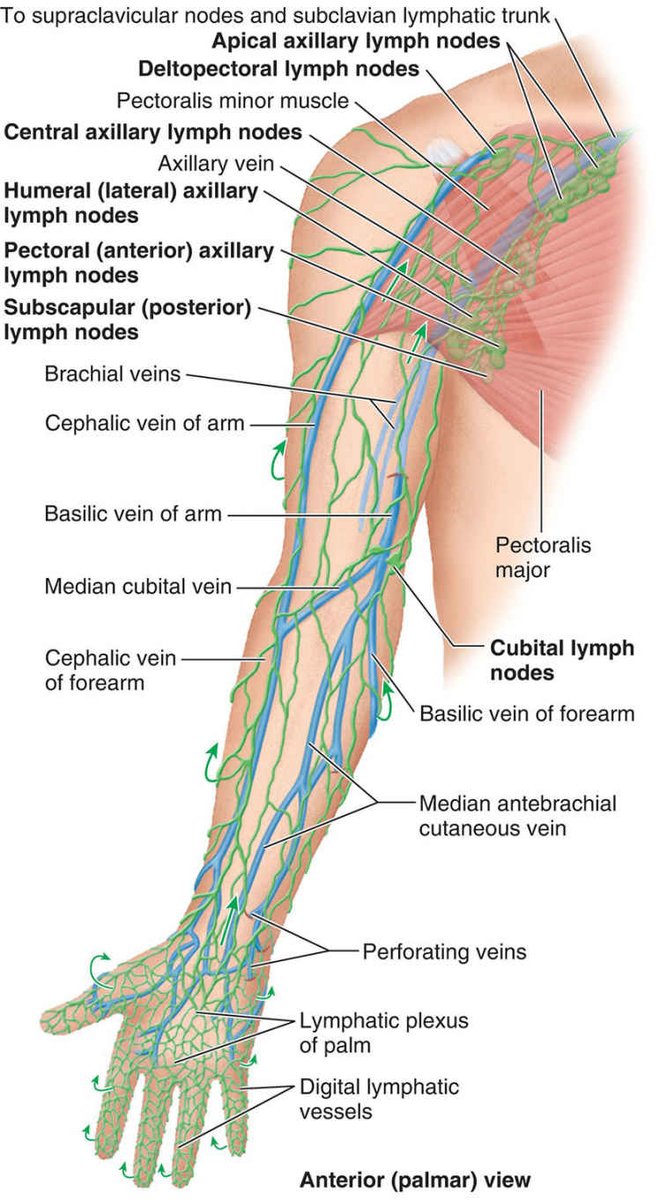 Eating a well-balanced diet and controlling body weight is an important part of treatment.
Eating a well-balanced diet and controlling body weight is an important part of treatment. The surgeon transfers healthy lymph nodes to the affected area and rewires the lymphatic system to reduce swelling.
The surgeon transfers healthy lymph nodes to the affected area and rewires the lymphatic system to reduce swelling. It is caused by congenital malformations (defective genes) of the lymphatic system. This type of lymphedema is rare, with about 1 in every 10,000 people.
It is caused by congenital malformations (defective genes) of the lymphatic system. This type of lymphedema is rare, with about 1 in every 10,000 people.

 The electrodes are placed on the hand and foot on one side. Since all the tissues of our body have different density and charge, the device sends an impulse to the tissues and reads the response.
The electrodes are placed on the hand and foot on one side. Since all the tissues of our body have different density and charge, the device sends an impulse to the tissues and reads the response.
